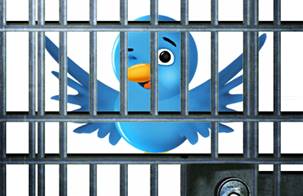Non-Releasable Wildlife, by Jacqui Webb

We have had a few queries on what to do if wildlife we have rescued and cared for is non-releasable. We quite often also get queries from members of the public who have found injured wildlife and want to rear and keep as pets. Our FRW permit is a Rehabilitation Permit only and does NOT allow us to keep such wildlife as pets, nor give it to other people to keep as pets.
As explanation I have taken the following from the pages of Department of Environment and Heritage Protection (http://www.ehp.qld.gov.au/licences-permits/plants-animals/rehabilitation/index.html) Much of Queensland's native wildlife is protected under the Nature Conservation Act 1992. This legislation provides for a licensing system to help protect native wildlife from over exploitation and to ensure wild populations of plants and animals are protected. Anyone who intends to take, use or keep native plants and animals should be familiar with Queensland's wildlife laws and regulations.
The Nature Conservation Act 1992 provides a mechanism for the rehabilitation of sick, injured or orphaned protected animals so that these animals can be returned to the wild.
Volunteer wildlife carers perform a valuable community service by rescuing and rehabilitating thousands of protected animals each year. The regulation allows for the rescue of sick, injured or orphaned native animals in emergency circumstances by unlicensed persons. A person who is not licensed should give the animal to the holder of a rehabilitation permit immediately. However, where this is not practical, arrangements must be made within 72 hours for the animal to be given to licensed carer. Please consider the animal’s welfare at all times as delays in getting the animal to a carer are likely to cause its condition to deteriorate.
Under the Nature Conservation Act 1992 Part 5 Wildlife and habitat conservation, it states that ‘all protected animals are properties of the State.’ It also states that ‘A person must not take a protected animal unless the person is an authorised person or the taking is authorised under this Act’. This means one needs to have a permit to take a protected animal from it natural environment. FRW has a Rehabilitation permit issued by the Department of Environment and Heritage Protection that allows us to rescue, rehabilitate and release most species of Sick, Injured and Orphaned Wildlife protected Australian Wildlife. All of our carers receive a membership pack on joining our organisation and in this pack is a copy of the permit with information on the species each carer is allowed to care for written on the permit and signed by the FRW President. You would of also received a Code of Practice for Sick, Injured and Orphaned Protected Animals in Qld, Nature Conservation Act. These are also available at all our meetings and workshops.
According to the Code of Practice for Sick, Injured and Orphaned Protected Animals in Qld, Nature Conservation Act 1992 ‘All native birds, mammals (except the dingo outside protected areas), reptiles and amphibians and, some native fish and invertebrates in Queensland are protected under the Nature Conservation Act 1992’. It also states that ‘A person or organisation engaging in wildlife rehabilitation must be licensed. It is the responsibility of the permit holder to ensure compliance with the provisions of this code.’
As stated earlier, we are not licensed to keep unreleasable animals as pets or give to a non-permitted individual for rehabilitation or to keep as a pet.
These animals in care need to be returned to their natural environment once rehabilitated. If unable to be returned to the wild then they must be euthanased (unless they are able to enter the Qld Species Management Plan for Wildlife Parks and/or Zoos or a Breeding Programme approved by the Minister for Endangered or Threatened Species, so highly unlikely with our common species).
This is clearly stated in the our Code of Practice for Sick, Injured and Orphaned Protected Animals in Qld, Nature Conservation Act 1992 :
12.2.4. Unless EHP has granted permission for the animal to enter the Queensland Species Management Plan (QSMP) or unless otherwise advised by the EHP Director Wildlife Management, an animal must be euthanased when:
12.2.4.1 an orphaned animal is not viable or is unlikely to be rehabilitated
12.2.4.2 there is no suitable release location (refer to sections 14.2.4 and 14.2.7 regarding release/alternative release locations)
12.2.4.3 the ability to reproduce is lost due to an injury, disease or surgical procedure
12.2.4.4 the ability to move freely or normally (i.e. run, climb, crawl, hop, fly or swim) is permanently impaired due to, for example, a missing or impaired limb, wing, foot or tail, such that it will significantly impair the animal’s ability to survive in the wild
12.2.4.5 the ability to sense environment (i.e. see, hear, smell, taste or feel) is permanently impaired due to a missing or injured organ such as an eye, ear or nose, such that it will significantly impair the animal’s ability to survive in the wild
12.2.4.6 the ability to catch, find or handle food is permanently impaired
12.2.4.7 its advanced age renders it unlikely to survive in the wild.
After all, it would be unfair to keep, for instance, a wild bird of prey in a small cage for the rest of its natural life. It could be likened to me locking you up in jail for the rest of your natural life, unable to exercise, socialise with others of your own species or live a natural life, being unable to mate and breed, rear a family and soar the thermal air currents high up in the sky!
If you do have further queries regarding this matter please speak to you Species Liaison Officer and/or a committee member.